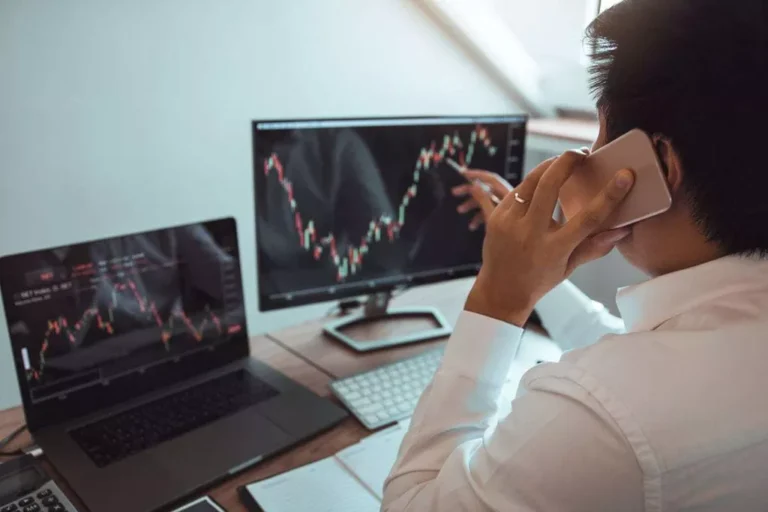A Special Perspective On Energetic Vs Passive Investing
6.23.2023
According to Thomson Reuters Lipper, the common expense ratio for an actively managed equities fund is 1.four per cent, in comparison with 0.6 per cent for a median passive inventory fund. Fees are more important because all of the active buying and promoting ends in transaction charges, not to mention the salary of the analyst team liable for analysing equity picks. All of those bills accumulate over many years of investing and may considerably scale back earnings. Yes, buyers usually use a blend of both passive and energetic methods of their portfolios.
- Since actively managed funds undertake frequent buying and promoting of securities, they have an inclination to have the next portfolio turnover.
- The fund manager also needs to decide if the prevailing shares will stay in the same focus if the funds invested in individual stocks need to be increased or decreased.
- Since passive funds only purpose to replicate the performance of a benchmark index as an alternative of outperforming it, the extent of management required is minimal.
- Say if Sensex goes through a rejig, the fund supervisor should make the identical adjustment in his/her fund.
- Passive investing additionally offers broad market publicity and diversification, lowering the impact of individual stock or sector efficiency on overall portfolio returns.
- For instance, whenever you buy units of a mutual fund, the fund manager will goal to offer higher returns than the benchmark index.
Active investing also offers alternatives for revenue technology by way of numerous ways, corresponding to dividend-paying shares, interest-bearing funding choices, actual estate investments, options buying and selling, or other belongings. Actively managed portfolios often include stocks of assorted firms that pay common dividends. When traders put cash in such shares, these dividends are supplied to them as a steady stream of income.
Since passive funds replicate the composition of the benchmark index, additionally they eliminate security choice danger and excessive turnover danger. For instance, passive funds are probably to have a decrease expense ratio than active https://www.xcritical.in/ funds. Passively managed funds are most likely to comply with the weighting methodology of the benchmark index, which may not always be aligned with an investor’s danger tolerance and preferences.
Each technique comes with its personal set of unique options, advantages, and drawbacks, and deciding between the 2 can be extremely confusing, especially for new investors. Therefore, a transparent understanding of the differences between lively and passive investing is crucial for investors to make knowledgeable selections. However, despite being lower-risk as in comparison with lively investing, passive investments, like all investments, carry a certain stage of threat. One of the biggest downsides of actively managed funds is their higher expense ratio.
Determination Between Energetic Or Passive Investing
Passive investing is mostly thought of safer because of its long-term, low-risk approach. It is advisable to conduct thorough analysis earlier than making any investment selections. Active investing is riskier, counting on deciding on individual stocks and market timing. Passive investing is safer, spreading risk across a market index, minimizing the influence of any single stock’s efficiency and counting on long-term market progress.

Hence, they could be a sensible choice for your portfolio if your risk tolerance is moderate to excessive. Passive funds are typically more tax-efficient as they have a lower turnover and tend to have fewer capital positive aspects distributions. Conversely, lively funds undertake frequent buying and promoting, which results in extra capital positive aspects distributions, which can result in higher tax liabilities for traders. Active investors want to outperform the market by strategically selecting and timing individual inventory investments. At the identical time, passive investors seek to match market returns, acknowledging the market’s total efficiency without actively attempting to outperform it. However, knowledge indicate that actively managed Exchange-Traded Funds (ETFs) did properly amid market upheavals, similar to the tip of 2019.
Active Vs Passive Investing: Making Informed Funding Choices
The expense ratio reduces the returns of the fund and varies depending on the fund’s strategy and asset class. An actively managed portfolio is a collection of securities that are chosen and managed by knowledgeable fund supervisor. The fund manager goals to beat the efficiency of a benchmark index, such as the Nifty 50 or the Sensex, by utilizing various methods, such as market timing, inventory picking, sector rotation, and asset allocation. The fund manager has the discretion to buy and promote securities according to their research and evaluation. Any dialogue on the distinction between energetic and passive investing might quickly devolve into a heated disagreement, as traders and wealth managers incessantly favour one technique over the opposite. While passive funding is extra in style with traders, there are compelling causes for the advantages of active investing.

Also, one should do not neglect that investing in the market, particularly in equities, is fraught with danger. However, one might minimise this danger and maximise their returns by being cautious with picking the acceptable funds, using the investment calculator, and following the advice of consultants. An active funding plan might have higher returns since its goal is to often surpass the benchmark returns of the index. To allow you to pick the suitable possibility, we have in contrast lively investing vs passive investing. From tracking benchmarks and errors to rebalancing policies and disclosing holdings, passive investing ensures that what you see is what you get and experience.
It typically relies on the expertise of portfolio managers or active participants who actively purchase and sell securities in an attempt to outperform the market. These traders conduct in-depth evaluation, make the most of various investment techniques, and make well timed decisions based on their evaluation of market circumstances. Active investing is an strategy where traders make frequent choices about buying and promoting investments. Active investors and fund managers analyze market trends, study and follow the company’s performance intently, and use their future views to make sensible funding selections. One of the first variations between passive and lively investments is the management style. Conversely, passive funds follow a predetermined set of rules to reflect a benchmark index’s composition and weights.
Disadvantages Of Passive Investing
The actions of lively investors create indices that are adopted by passive traders much later. The consequence of participation in compounding journey with a lag, dilutes the magic of compounding to a large extent. Compounding calculations recommend an alpha of ~3% on INR 1 crore over 30 years is INR 70 crores.

Since traders are not tied to specific funding options, they can decide whether to keep their cash in a particular investment possibility or transfer it to wherever they see a chance for it to develop. This signifies that the portfolios of active investors may be customized incessantly as per investor’s risk appetites, interests, and financial goals. This facility allows buyers to outperform even in times of utmost economic decline.
For extra particulars on danger components, terms and situations, please read gross sales brochure carefully earlier than concluding a sale. The terms and situations of product/plan as contained in the Policy Document issued by the Company is available on the Web Site. The names of the Company, Products/Plans/funds do not indicate the quality and its future prospects or returns. IN ULIPs, THE INVESTMENT RISK IN THE INVESTMENT PORTFOLIO IS BORNE BY THE POLICYHOLDER.

It is shocking to notice that out of 23 stocks that exited Nifty over final 7 years, 15 shares exited below their inclusion value. This occurs as a end result of passive investing does not give any regard to trade tailwind, management quality, growth alternatives, stability sheet metrics and other such basic aspects of investing. All of this information demonstrates that passive beats Active investment; on the other hand, it could be oversimplifying something far more complicated, as active and passive investing are two sides of the identical coin. While this methodology could set off capital gains tax, advisors can customise tax administration techniques to particular person purchasers, corresponding to promoting underperforming investments to offset the taxes on the large winners.
Sturdy Long Term Fund Efficiency Monitor Record**
Investment in securities markets are subject to market risks, learn all of the associated documents rigorously earlier than investing. Trusted by over 2 Cr+ shoppers, Angel One is considered one of India’s leading retail full-service broking houses.
Active funds are inclined to have a better degree of risk as a outcome of the flip facet of outperformance is underperformance, and which means the fund goes is dependent upon the decisions taken by the fund manager. As for passive funds, the first risk they face is what’s known as the monitoring error, which is the deviation of the fund’s performance from the benchmark index. The returns of passively managed funds are extra steady and consistent as they aim to replicate that of the benchmark index. Even although they could not precisely match the returns of the benchmark, they don’t tend to considerably underperform either.
This calculation and outcomes displayed are based on info provided and certain assumptions in regards to the charges of return. It isn’t intended to be and must not alone be taken as the basis for an investment decision. Kindly note that the returns are only illustrative and they are not guaranteed.



